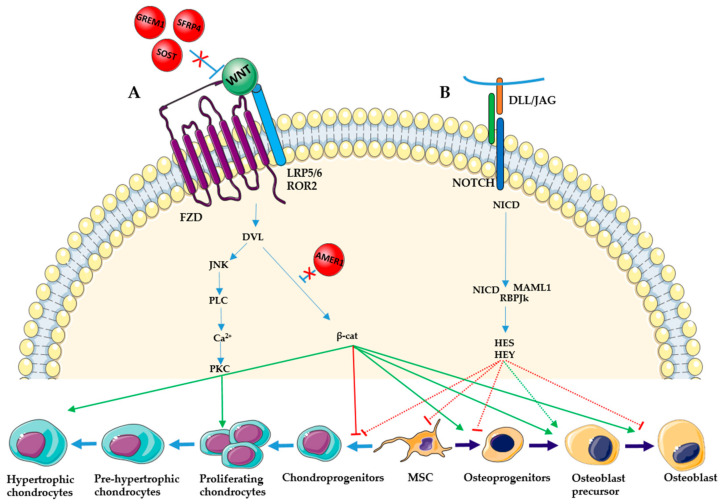Figure 2.
WNT and NOTCH signaling pathways in chondrocyte and osteoblast differentiation. (A) WNT ligands bind to the FZD receptors with or without specific co-receptors like LRP5, LRP6 and ROR2. In the canonical pathway, WNT binding activates the translocation of β-catenin in the nucleus. This inhibits the first step of chondrogenesis but induces the chondrocyte hypertrophic differentiation and osteoblast differentiation and maturation. The non-canonical pathways, through the activation of DVL, JNK and PLC proteins, activate PKC and induce chondrocyte proliferation. WNT signaling can be negatively regulated by extracellular inhibitors, such as SOST, GREM1 and SFRP4, and by intracellular inhibitors, like AMER1. (B) In the NOTCH pathways, DLL or JAG ligands bind to NOTCH receptor and cause consequent proteolytic cleavages resulting in the release of NICD which translocate in the nucleus and interact with MAML1 and RBPJk proteins. NOTCH signaling inhibits chondrogenesis, and the first and the last stages of osteoblast differentiation, but promotes the differentiation of osteoprogenitors in osteoblast precursors.

